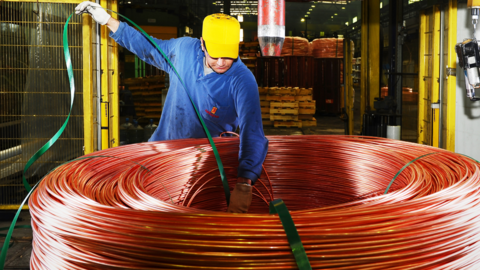Copper Under Fire: Trump’s Bold 50% Tariff Shakes Up Global Trade
President Donald Trump has announced a staggering 50% tariff on copper imports, a move aimed at bolstering the United States’ national security while protecting domestic industries. This significant decision comes after an investigation into the impact of copper imports on the nation, aligning with similar tariffs imposed on steel and aluminium products.
During a televised cabinet meeting, Trump casually declared, “Today we’re doing copper… We’re going to make it 50%,” highlighting the impulsive nature of his tariff strategy. Commerce Secretary Howard Lutnick stated that this new tax will be implemented by the end of the month, following formalization by Trump.
The U.S. Geological Survey reports that the U.S. imported approximately 810,000 metric tons of refined copper last year, which constitutes nearly half of its consumption. Major suppliers included Chile and Canada, with copper being essential for military equipment, electric vehicles, and construction.
The introduction of a 50% tariff is notably higher than current rates and is sparking concerns among industry stakeholders. Some anticipate potential exemptions for specific countries, casting a shadow of uncertainty over the implications of the new tax. Industry experts, like Scott Lincicome from the Cato Institute, suggest that this might only be the beginning of a wave of similarly high tariffs across various sectors.
Alongside this announcement, the Trump administration is also gearing up to implement additional tariffs globally, potentially ranging from 25% to 40% on various goods starting August 1st. This follows a previous 10% tariff that Trump had already put in place, which faced backlash from financial markets and business groups.
There are ongoing negotiations with multiple countries, including South Korea and Japan, as trading partners seek to avoid these steep new tariffs. Meanwhile, in the UK, steelmakers are anxiously awaiting clarity on whether they will be exempt from a drastic 50% tax on their products, especially since recent agreements suggested a tariff-free allowance for certain amounts.
In a broader context, Trump has ambitions to impose tariffs up to 200% on pharmaceuticals, signaling a sweeping change in U.S. trade policy that promises to create further ripples across global markets. Industry leaders and nations alike are bracing for the fallout, as the uncertainty surrounding these tariffs continues to unfold.

